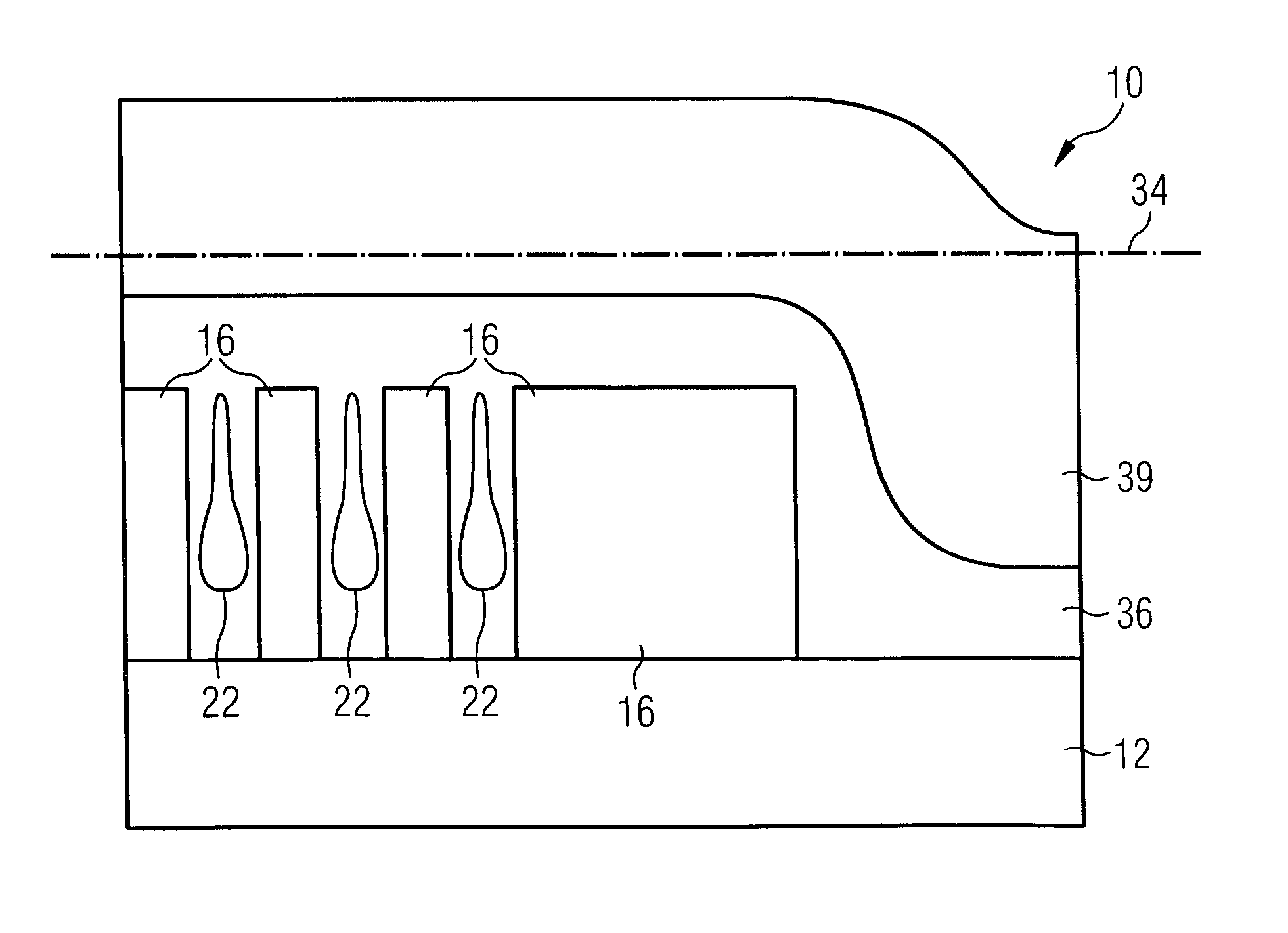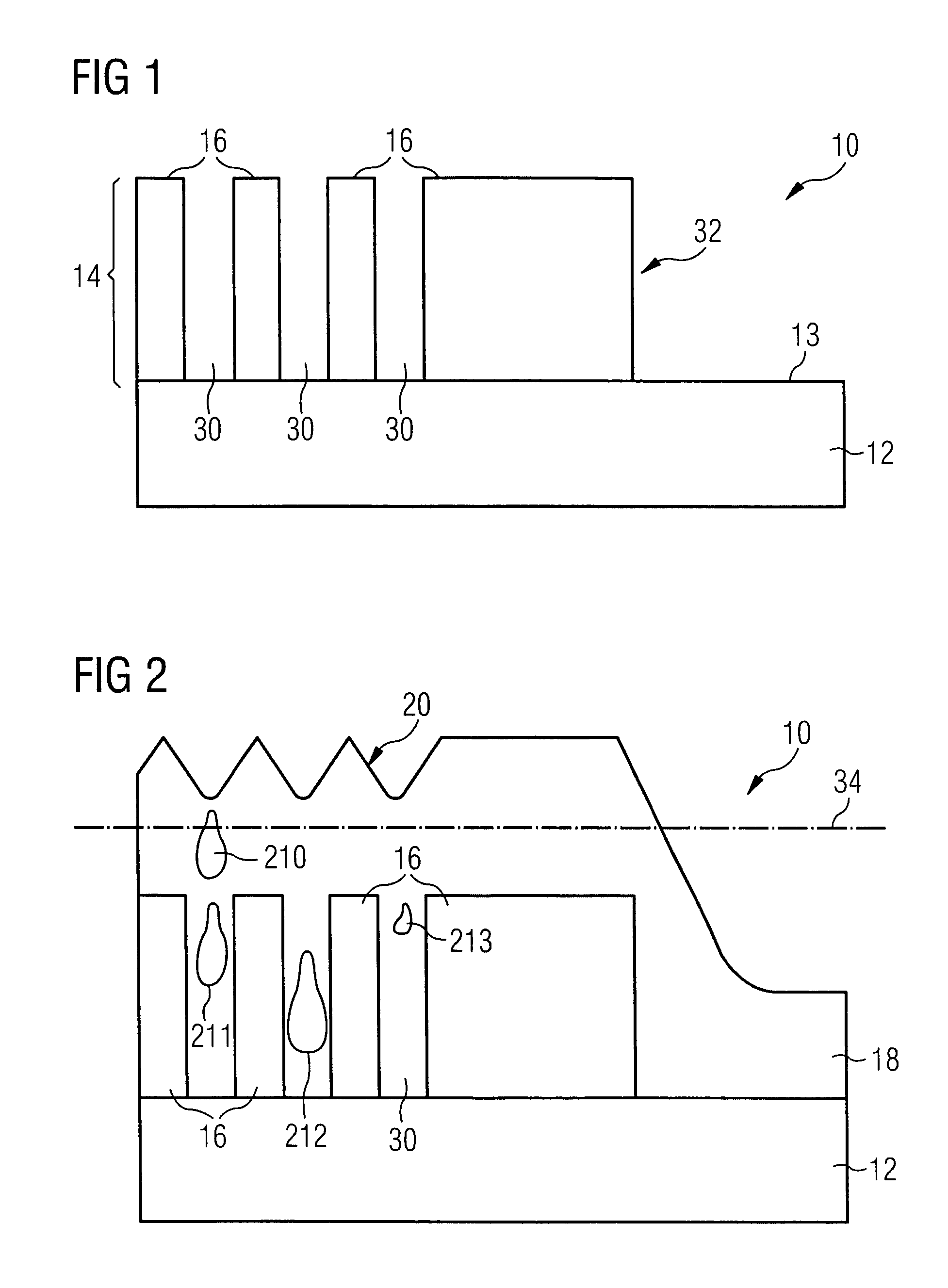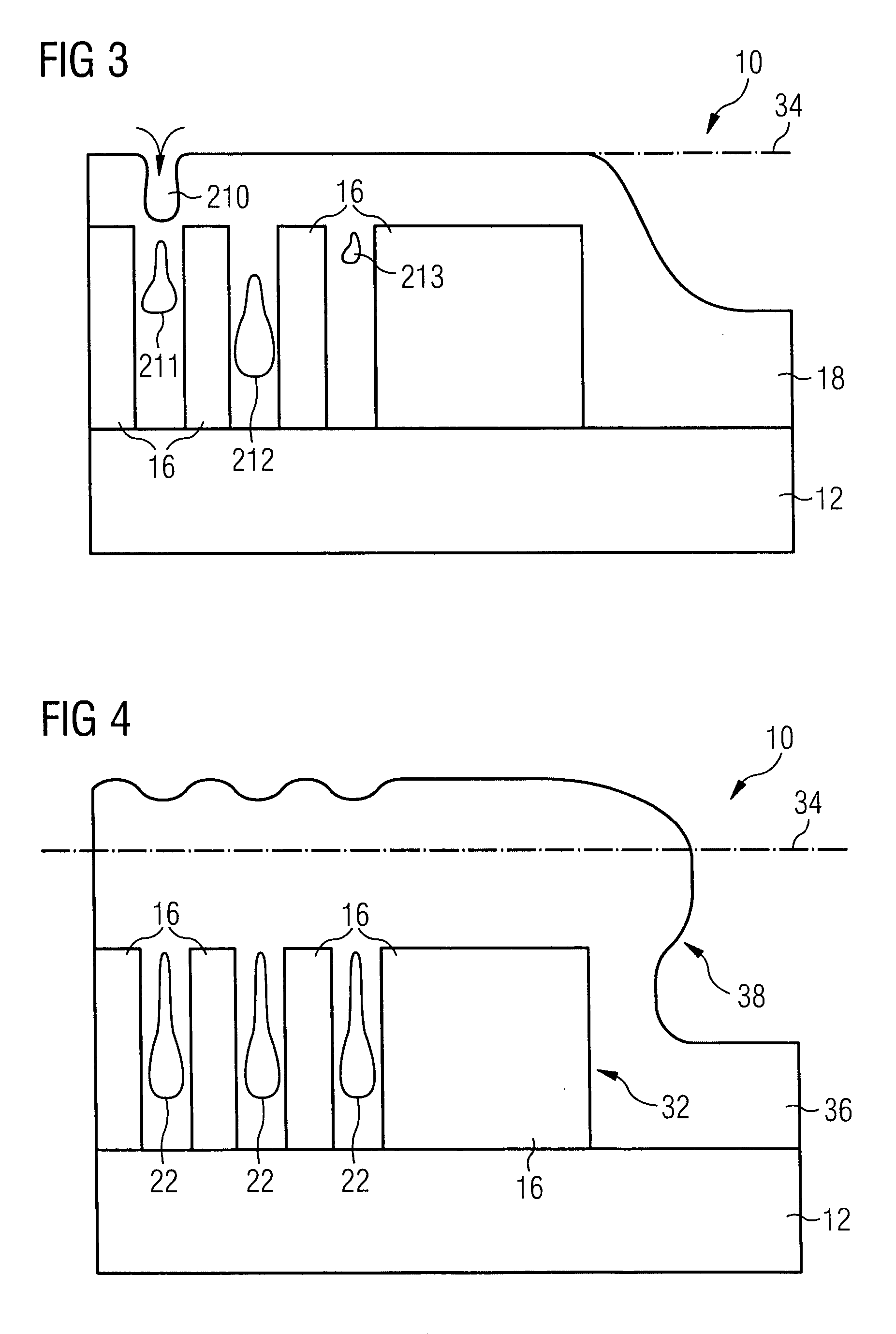Method of forming an electrical isolation associated with a wiring level on a semiconductor wafer
- Summary
- Abstract
- Description
- Claims
- Application Information
AI Technical Summary
Benefits of technology
Problems solved by technology
Method used
Image
Examples
Embodiment Construction
[0035]FIG. 1 shows a profile of raised structure elements arranged in parallel on a surface 13 of a semiconductor wafer 10. The raised structure elements are wiring lines 16, which correspond to a wiring level 14. Each two of the wiring lines 16 encompass spacings 30 formed in between the field of wiring lines. The outermost of the wiring lines 16 has an outer edge 32 oriented towards an area of the surface 13, which is not covered with wiring lines 16.
[0036] The surface 13 is provided by a planarized upper surface of an isolation layer 12, which pertains to a further wiring level arranged next below the present wiring level 14, and may contain a silicon oxide, a nitride, a doped silicon glass, etc. Alternatively, layer 12 may represent an isolation layer, which covers a silicon substrate (not shown).
[0037] The wiring lines 16 may comprise any electrically conductive material such as doped polysilicon or a metal, or a metal silicide, etc. It is further possible, that wiring lines ...
PUM
 Login to view more
Login to view more Abstract
Description
Claims
Application Information
 Login to view more
Login to view more - R&D Engineer
- R&D Manager
- IP Professional
- Industry Leading Data Capabilities
- Powerful AI technology
- Patent DNA Extraction
Browse by: Latest US Patents, China's latest patents, Technical Efficacy Thesaurus, Application Domain, Technology Topic.
© 2024 PatSnap. All rights reserved.Legal|Privacy policy|Modern Slavery Act Transparency Statement|Sitemap



